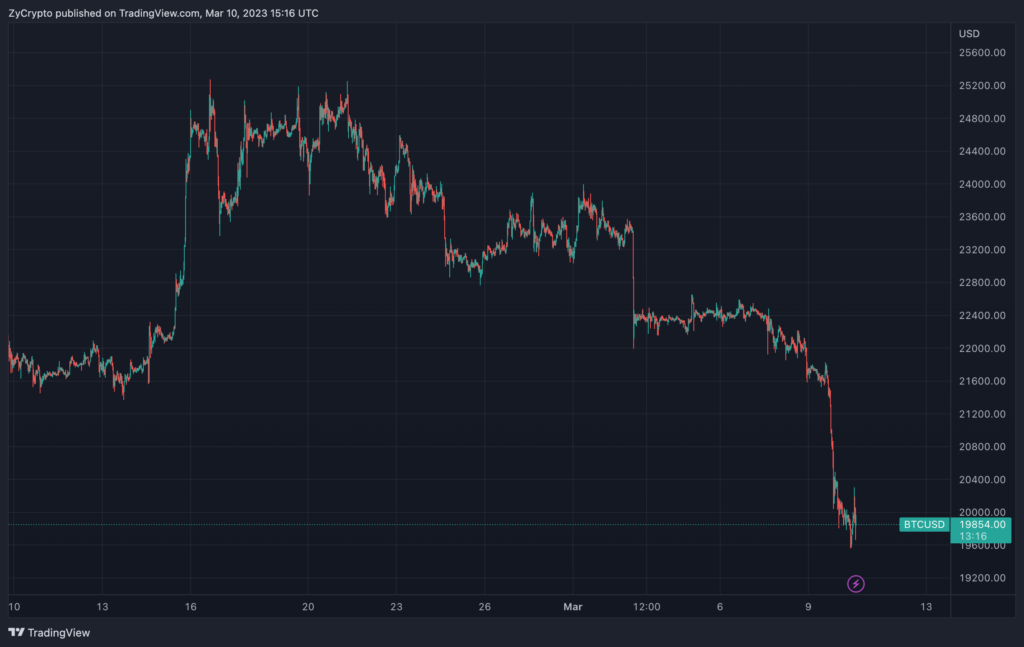Bitcoin plunged to a three-week low Friday, freeing itself from a tight price squeeze that had seen it fluctuate between $22,500 and $22,200 since March 3.

The drop came after the U.S. Federal Reserve Chairman Jerome Powell stated on Tuesday that while inflation has been coming down, it’s still nowhere near the Fed’s 2% target. Investors have taken his comments to suggest that the bank would likely continue to push for more aggressive monetary policies than expected.
“Although inflation has been moderating in recent months, the process of getting inflation back down to 2% has a long way to go and is likely to be bumpy. The latest economic data have come in stronger than expected, suggesting that the ultimate interest rate level is likely to be higher than previously anticipated,” Powell told the Senate banking committee.
The comments saw the top cryptocurrency by market capitalization fall by just over 12% to tap $19,628 during the Asian session today before recovering to around $19,958 at press time. Ether, the second largest cryptocurrency, also took a hit, albeit falling slightly lower at less than 1% to tap $1,540.
BTC Risks Further Drop, Says Soloway
Meanwhile, as the Fed’s policies and industry turmoil continue to roil risk assets, Gareth Soloway, Chief Market Strategist of InTheMoneyStocks, warned that there could be more downside for Bitcoin and other cryptos. Speaking to Kitco News, the analyst ruled out claims that Bitcoin had reached a bottom when asked if the ongoing consolidation pointed to a rebound.
“According to the charts, it’s saying not so much right now. It’s not to say we can’t have a little upside, but there’s still some major headwinds that the market has to digest out there,” Gareth told Kitco host David Lin, noting that investors should be “very careful” after the Fed signalled to hike rates further.
Gareth, who has previously called Bitcoin’s fall to $20,000, stated that the asset was likely to drop to a high-end target of $13,000 or a low-end target of $9,000. Referencing previous bear markets and considering the unique nature of current market drivers compared to previous bear markets, he also projected that it would take longer for Bitcoin to transition to a bull market.
“We are about a year and a half into this bear Market. This stagnation implies perhaps a year and a half of stagnation before Bitcoin shoots up to the moon again,” he added.







